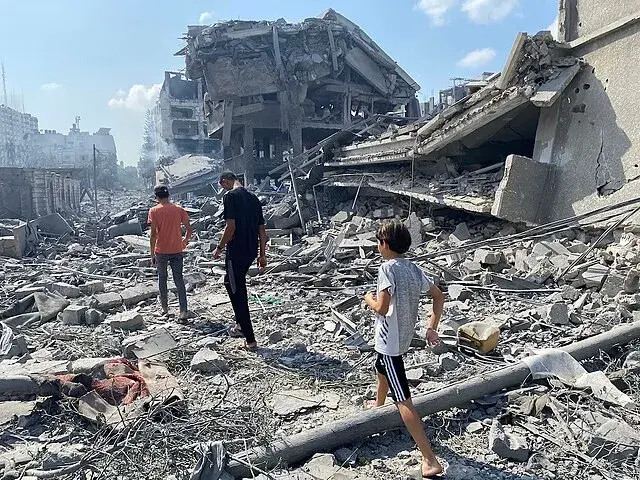The vision, which reflects a number of longstanding Israeli stances, emphasizes Netanyahu’s opposition to the establishment of a Palestinian state which he views as a security risk

The Israeli leader Benjamin Netanyahu has outlined his first official vision for the future of the Gaza Strip after the war is over, stating that Israel will retain security control over Palestinian territories and link reconstruction to disarmament.
The vision, which reflects a number of longstanding Israeli stances, emphasizes Netanyahu’s opposition to the establishment of a Palestinian state which he views as a security risk, without clearly rejecting the possibility of one in the future. The vision was quickly rejected by Palestinian officials as unworkable.
The document, which was shared with security cabinet members as a basis for discussion rather than a final plan, suggests that Israel would keep security control over all land west of Jordan, including the occupied West Bank and Gaza – areas where the Palestinians want to create an independent state.
The vision emerges amid growing international pressure to stop the violence that has devastated large parts of Gaza and to renew efforts to create a Palestinian state next to Israel. U.S. President Joe Biden, Israel’s main partner, has said that only a two-state solution can bring lasting peace and has been working hard diplomatically to gain support from regional and other states.
Shortly after the vision was made public, U.S. Secretary of State Antony Blinken said Israel’s growth of settlements in the occupied West Bank violated international law, indicating a return to the long-term U.S. position on the issue, which had been changed by the previous administration of Donald Trump.
In the long-term objectives listed, Netanyahu opposes the “one-sided recognition” of a Palestinian state. He says a deal with the Palestinians will only be reached through direct talks between the two sides – without identifying who the Palestinian side would be.
In Gaza, it suggests replacing Hamas administrative control with local representatives “who are not linked to terrorist countries or groups and are not financially backed by them”, setting disarmament and de-radicalisation as targets to be met in the medium term.
“The prime minister’s document of principles shows wide public agreement over the aims of the war and for replacing Hamas rule in Gaza with a civilian option,” a statement by the Prime Minister’s office said.
The vision does not explain when that intermediate stage would start or how long it would last. But it makes the recovery of the Gaza Strip, much of which has been destroyed by Israel’s attack, dependent on its full disarmament.
On Friday, as the vision became known, efforts to achieve a break in the violence to allow the release of some of the 134 hostages held by Hamas continued before the Muslim holy month of Ramadan which starts in March.
Israeli ministers have said that if a deal is not reached, Israel will start its long-planned operation against the southern Gaza city of Rafah, where more than a million Palestinians have taken refuge under worsening humanitarian conditions.







